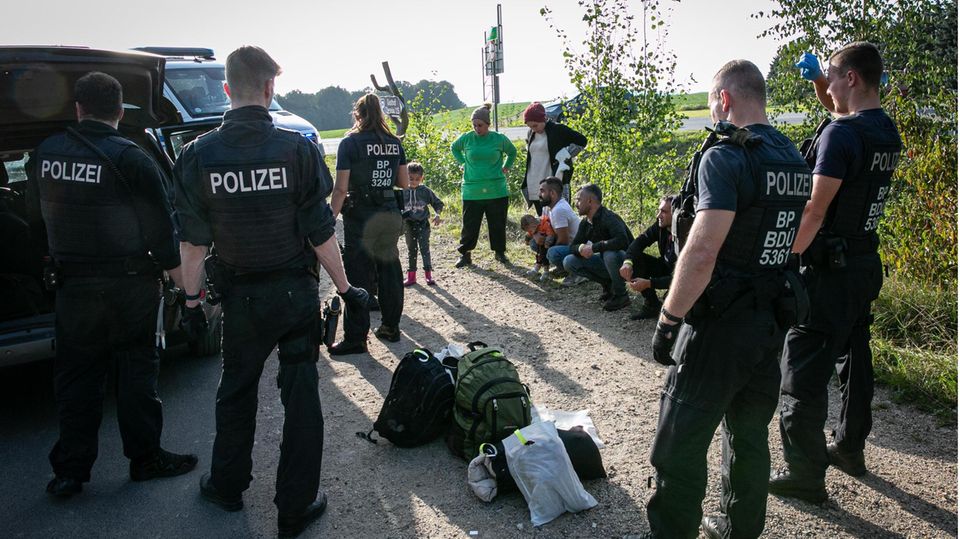migration
Faeser wants to register stationary border controls – to Poland, the Czech Republic and Switzerland
A federal police officer directs a truck driver coming from Austria to the checkpoint on the A93 motorway near Kiefersfelden
© Matthias Balk / DPA
Increased veil searches, selective checks at the borders – Federal Interior Minister Nancy Faeser has long been reluctant to order stationary checks at additional border sections. Now the decision has been made.
Federal Interior Minister Nancy Faeser (SPD) wants to register stationary border controls for the borders with Poland, the Czech Republic and Switzerland. As was learned from government circles in Berlin on Monday, federal police checks directly at the border, as has been the case on the border with Austria since 2015, will also be possible on these border sections in the future. The Federal Ministry of the Interior is preparing a corresponding letter to the EU Commission. The “Welt” had previously reported.
Increased controls near the Austrian border
However, smugglers are easier to catch with stationary checks, because during checks across the border they have often already disappeared by the time the police pick up the people who have entered the country irregularly.
Schengen area in the EU: free with restrictions
Rejections at Schengen internal borders are only legally permissible if the temporary reintroduction of border controls has previously been notified to the EU Commission. However, rejections are only used in relatively few cases, for example if a foreigner is banned from entering the country or if he does not apply for asylum.
Although the principle of open internal borders actually applies in the Schengen area, several states have currently notified border controls. France, for example, has requested controls at its borders with Belgium, Luxembourg, Germany, Italy, Spain and Switzerland, citing terror risks and irregular migration via the central Mediterranean route and the so-called Balkan route. However, the French do not check everywhere around the clock, but rather selectively and according to the situation. Things will probably be similar in the future on Germany’s border with the Czech Republic, Poland and Switzerland.
Between the beginning of January and the end of September, 233,744 people in Germany applied for asylum for the first time, around 73 percent more than in the same period last year. Many municipalities see themselves at the limit when it comes to accommodation, care and integration of refugees – also because more than a million war refugees from Ukraine have come to Germany since the Russian war of aggression began in February 2022.


